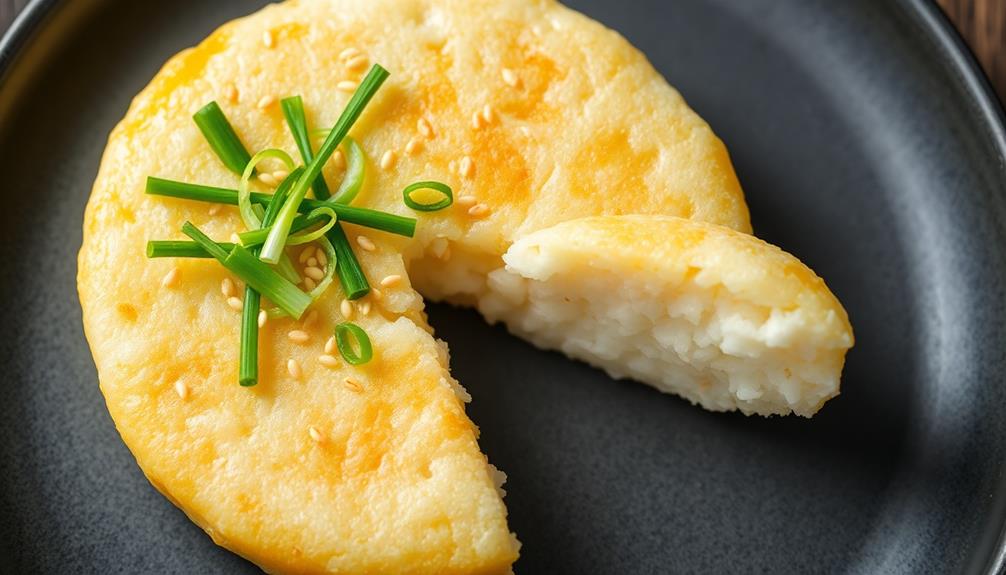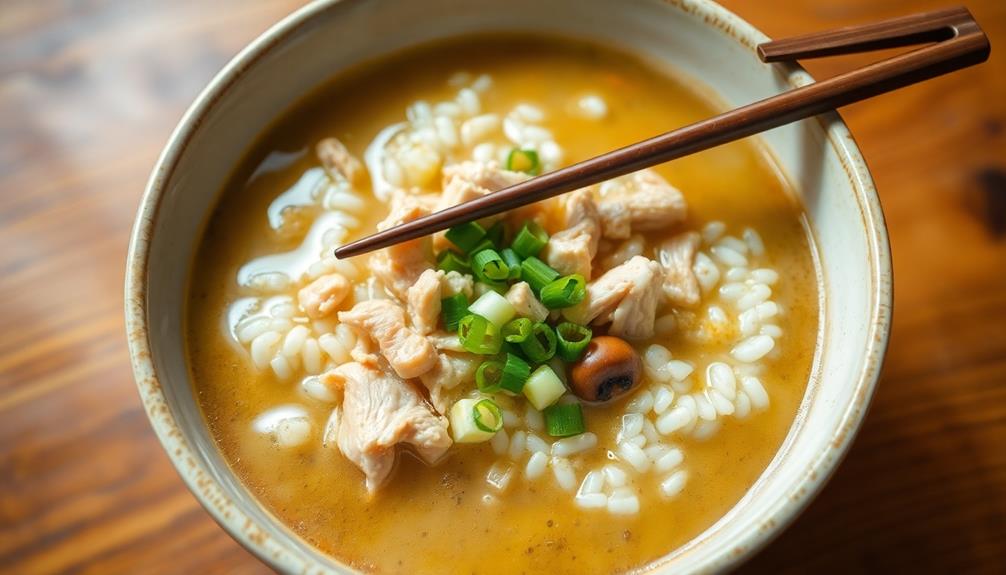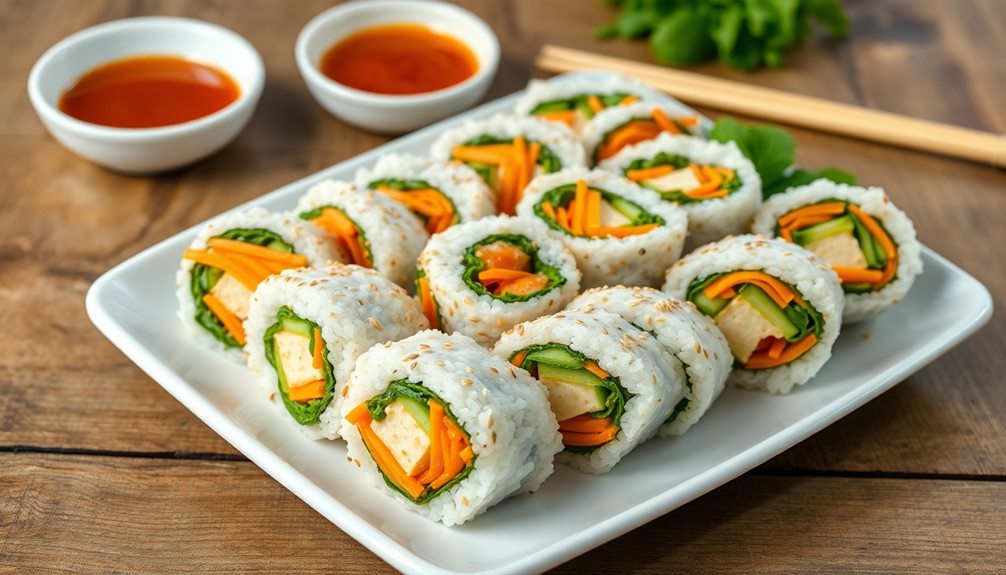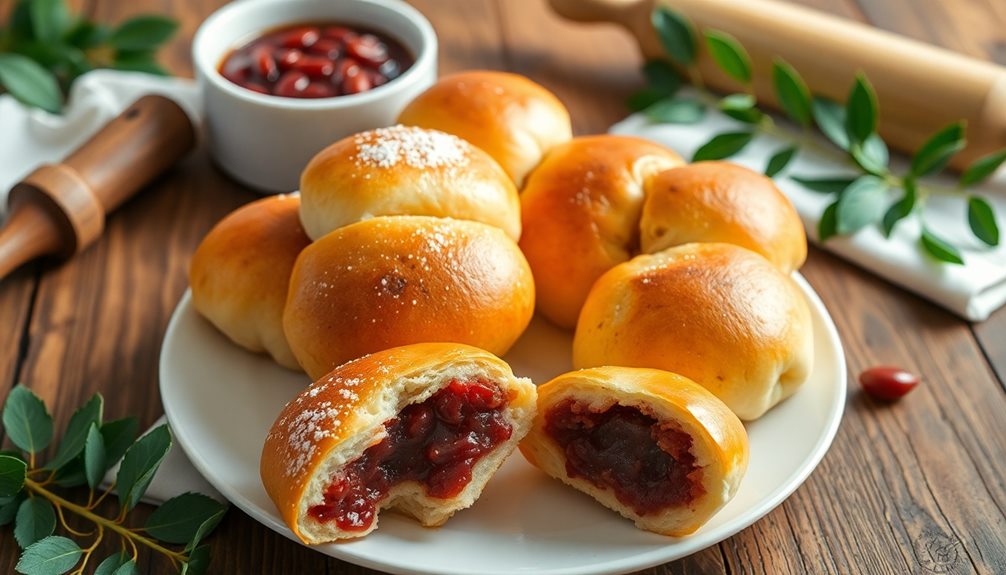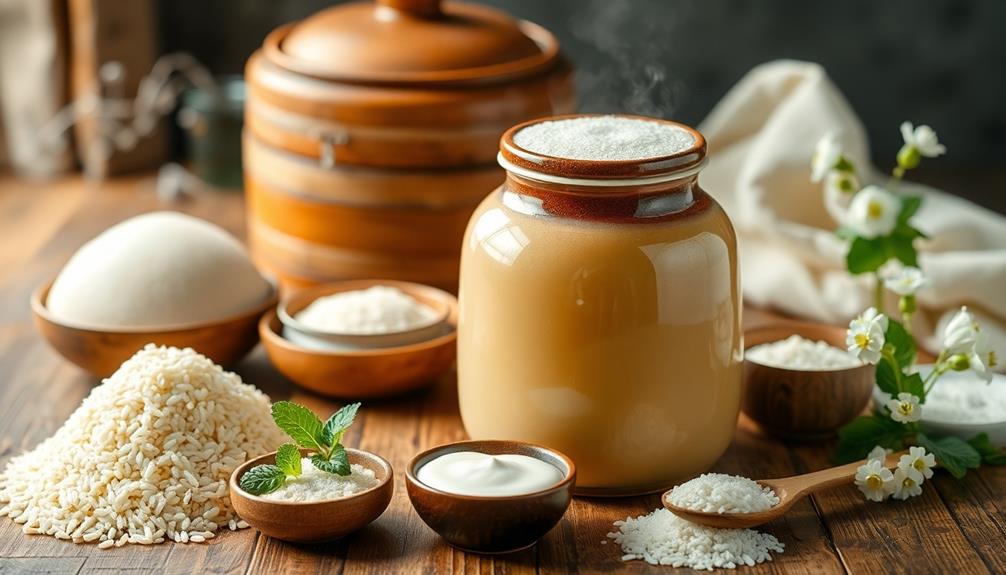Chapssaltteok, the beloved Korean rice cake, boasts a rich history dating back to the Goryeo dynasty. These chewy delights were once reserved for royalty but have since become a cherished staple in Korean homes and celebrations. Made with glutinous rice flour, they're perfectly balanced in sweetness and texture, with a crunchy coating of toasted sesame seeds. Whether you're enjoying them during Lunar New Year or as a special treat, these rice cakes represent an integral part of Korean culinary tradition. With their captivating presentation and irresistible flavors, it's no wonder Chapssaltteok's popularity continues to soar worldwide. Curious to learn more?
Key Takeaways
- Chapssaltteok is a traditional Korean rice cake with a unique chewy texture, made from glutinous rice flour and often filled with sweet red bean paste.
- The origins of Chapssaltteok can be traced back to the Goryeo dynasty, where it was once a delicacy enjoyed by the royal court.
- Chapssaltteok holds significant cultural significance in Korea, being an essential part of festive celebrations like Lunar New Year and Chuseok.
- The preparation of Chapssaltteok involves simple steps, including kneading the dough, boiling the dough balls, and coating them in toasted sesame seeds.
- Chapssaltteok's popularity has been growing globally, with fusion adaptations appearing on contemporary dessert menus and increased availability in international markets.
History
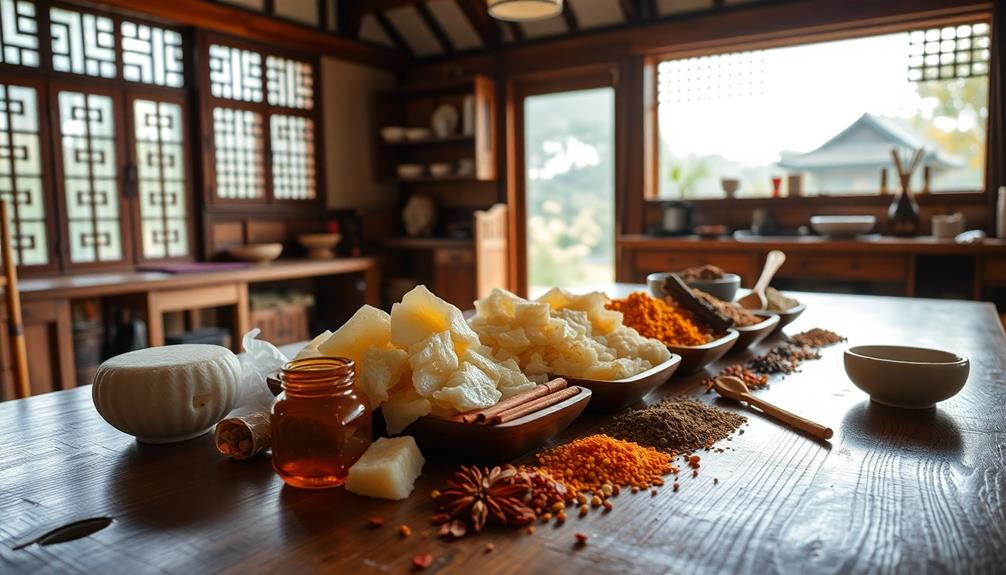
When did chapssaltteok, the beloved Korean rice cake, first come into existence? This chewy and sweet delicacy has a rich history dating back centuries!
Originating from the Korean peninsula, chapssaltteok was once a treat enjoyed only by the royal court. Over time, it became a beloved snack for people of all classes.
The earliest records of chapssaltteok can be traced to the Goryeo dynasty (918-1392 CE). During this period, the rice cakes were crafted with intricate designs and served at important events.
As the centuries passed, the recipes and techniques evolved, allowing the beloved chapssaltteok to become a staple in Korean homes and celebrations.
Today, chapssaltteok remains a beloved part of Korean culture. From Lunar New Year to Chuseok, these chewy rice cakes are a must-have for any festive occasion.
Their history is as rich and varied as the flavors they offer, making them a true taste of Korean heritage.
Recipe
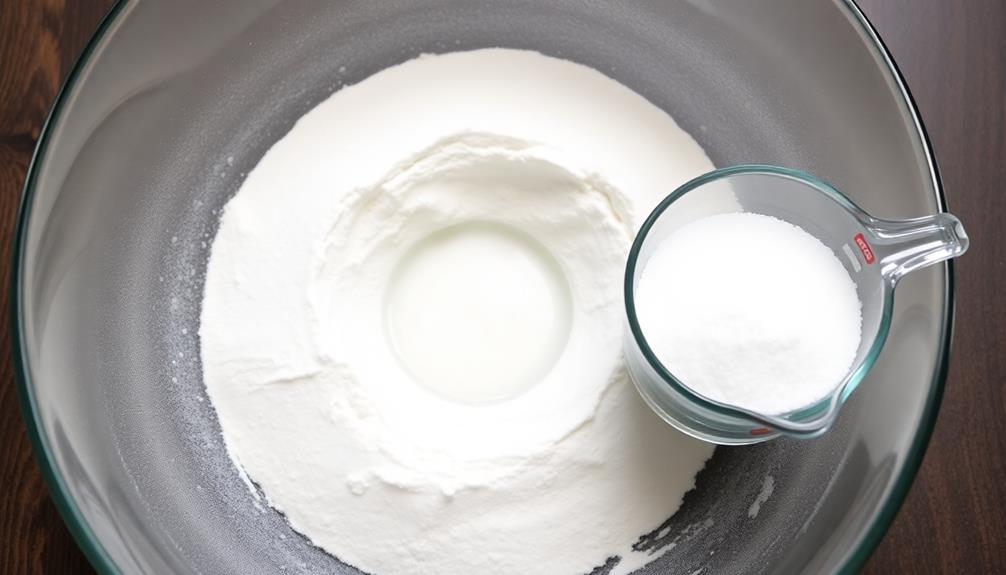
Chapssaltteok is a classic Korean rice cake that's both delicious and visually appealing. These soft, chewy cakes are made with glutinous rice flour, giving them a unique texture that sets them apart from other rice-based desserts. Traditionally, they're often enjoyed during special occasions or as a snack throughout the year.
The process of making chapssaltteok involves a few simple steps, but the results are well worth the effort. The combination of the sticky rice flour, sweetened red bean paste, and the subtlety of the flavors create a harmonious and satisfying treat.
Ingredients:
- 1 cup glutinous rice flour
- 1/2 cup water
- 1/4 cup sugar
- 1/2 cup red bean paste
- Cornstarch for dusting
Cooking Instructions:
In a large bowl, combine the glutinous rice flour and water. Knead the mixture until it forms a smooth, pliable dough. Cover the dough and let it rest for 30 minutes.
Divide the dough into 8 equal pieces. On a lightly cornstarch-dusted surface, roll each piece into a small ball. Use your thumb to make an indent in the center of each ball, then fill the indent with a teaspoon of red bean paste. Gently pinch the dough around the filling to seal it.
Arrange the filled chapssaltteok on a lightly cornstarch-dusted surface.
Tips:
When working with the dough, be sure to keep your hands and the work surface lightly dusted with cornstarch to prevent the dough from sticking.
Additionally, be gentle when filling and sealing the chapssaltteok to avoid tearing the delicate dough. Serve the chapssaltteok at room temperature or slightly chilled for the best texture and flavor.
Cooking Steps
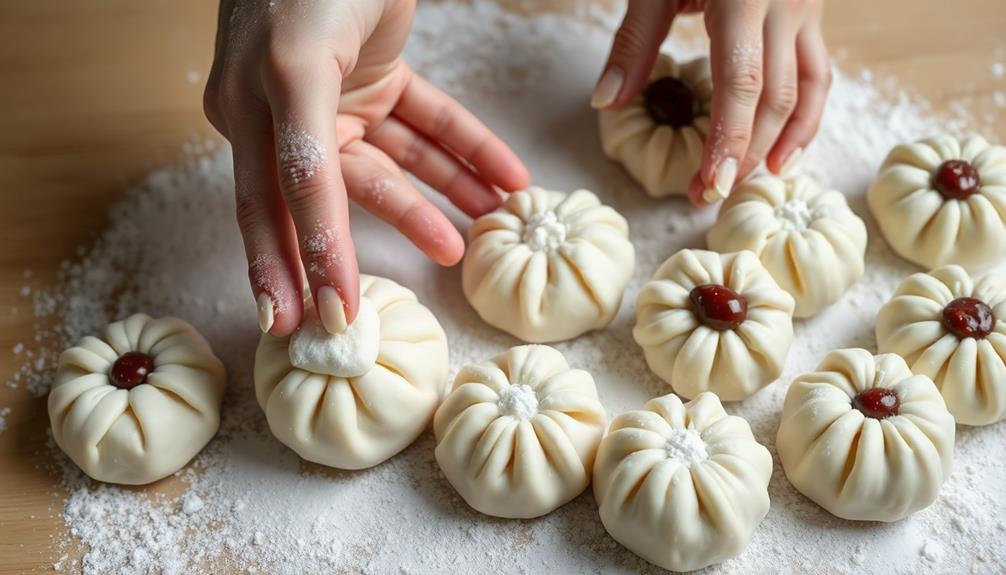
Let's get started on the fun part – kneading the dough, rolling it into balls, and flattening them.
You'll then boil the flattened dough balls and coat them in tasty sesame seeds.
This hands-on process is sure to get the whole family involved in creating these delightful Korean rice cakes.
Step 1. Knead the Glutinous Rice Flour Dough
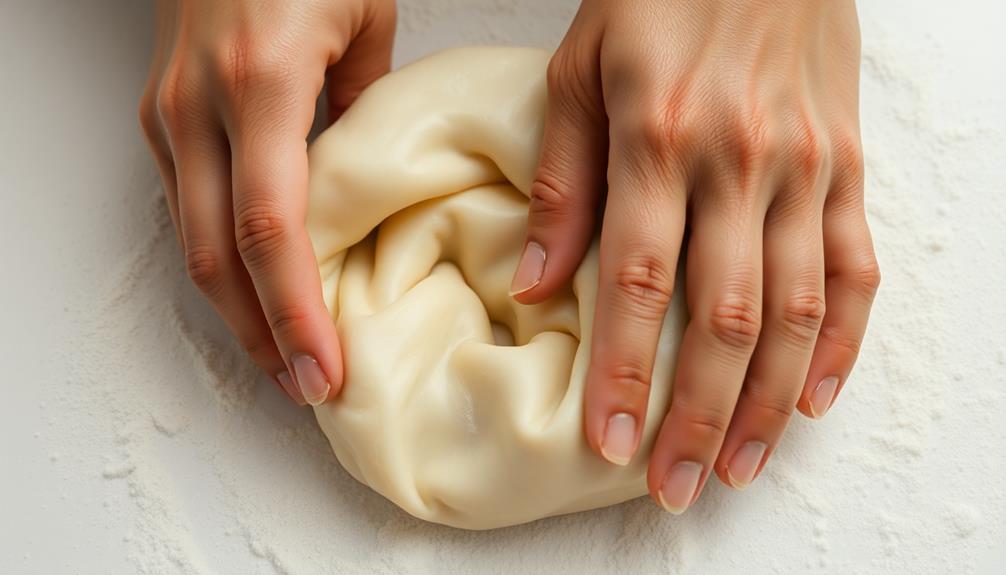
To begin, you'll want to knead the glutinous rice flour dough thoroughly. Grab a large mixing bowl and pour in the flour.
Slowly add in the water, a little at a time, as you mix the dough with your hands. Knead and squeeze the dough, working it until it becomes smooth and pliable, about 5 minutes.
Don't be afraid to get your hands dirty! The dough should feel soft and slightly sticky, but not so sticky that it sticks to your fingers. If it's too dry, add a bit more water; if it's too wet, sprinkle in a touch more flour.
Keep kneading until the consistency is just right.
Once the dough is perfectly mixed, cover the bowl and let it rest for 30 minutes. This allows the flour to fully hydrate, making the dough even more supple and easy to work with.
Now you're ready to start shaping those delightful chapssaltteok!
Step 2. Roll the Dough Into Balls
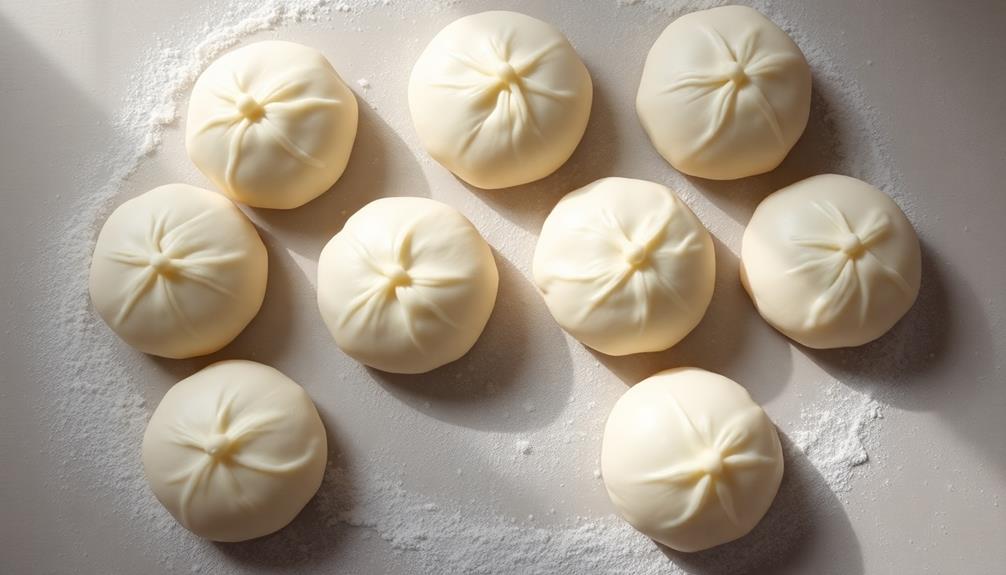
After the dough has rested, it's time to begin rolling it into balls. Grab a small handful of the soft, pliable dough and roll it between your palms to create a smooth, round shape. Be sure to use gentle motions to avoid overworking the dough. As you roll, the outside will become silky smooth, while the inside stays delightfully chewy.
Once you've formed a perfect ball, place it on a lightly floured surface. Repeat this process, rolling the remaining dough into consistent, bite-sized morsels. Aim for about 1-inch in diameter – this size will ensure each piece cooks evenly and has the perfect texture.
With all the dough transformed into tidy little balls, you're ready for the next step: steaming the chapssaltteok to achieve that classic glossy finish. Place the dough balls onto a parchment-lined steaming tray, ensuring enough space between them to expand as they cook. As with some choux pastry techniques, the steady application of steam will help the chapssaltteok develop a smooth, delicate surface. After steaming, allow them to cool slightly before serving, enjoying their soft, glossy exteriors.
Get ready for the aroma of sweet, toasted rice to fill your kitchen as these adorable rice cakes come to life!
Step 3. Flatten the Dough Balls
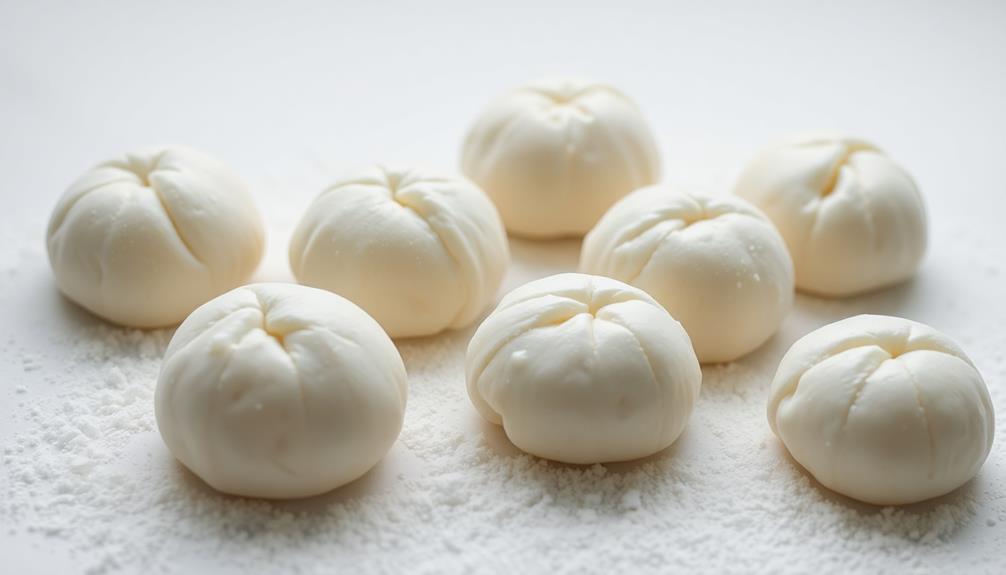
With the dough balls neatly arranged, it's time to flatten each one. Using your palms, gently press down on a ball, spreading it out into a flat, round shape.
Don't worry if it's not perfectly circular – the imperfections add to the charm!
As you flatten the dough, you'll notice it becomes smoother and more pliable. Keep going until each ball is about 1/4 inch thick. This will help the rice cakes cook evenly and achieve that signature chewy texture.
Once flattened, arrange the discs in a single layer on a lightly floured surface. This prevents them from sticking together.
With your work surface prepped, you're all set to move on to the next step – steaming the rice cakes! Get ready for the sweet, pillowy goodness that's about to unfold.
Step 4. Boil the Flattened Dough Balls
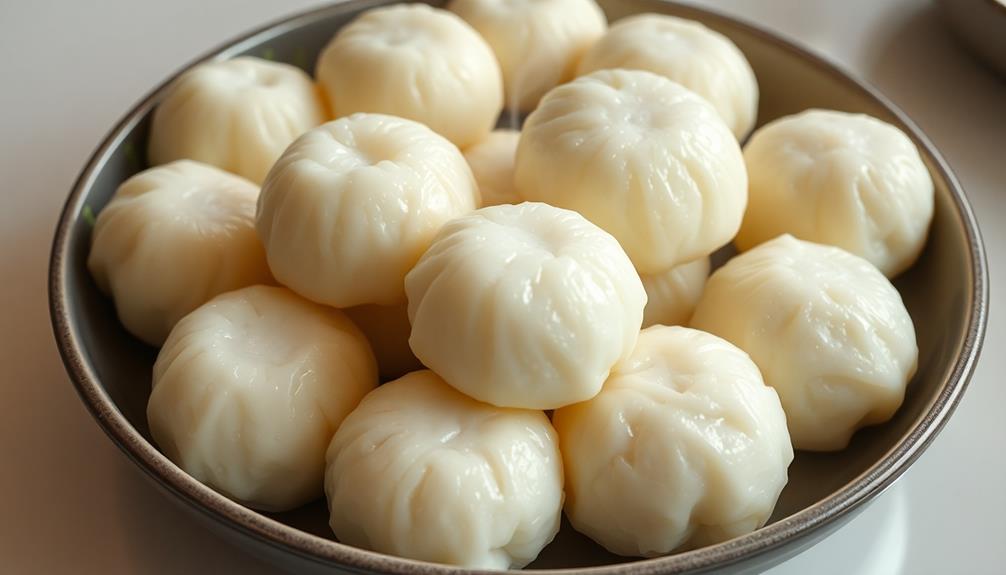
Next, bring a large pot of water to a boil over high heat.
Once the water is bubbling away, carefully drop the flattened dough balls into the pot. Gently stir and let them simmer for 5-7 minutes, until they're nice and puffy. You'll know they're ready when they float to the top!
Now, use a slotted spoon to scoop out the boiled rice cakes. Drain them well, making sure to remove any excess water. Aren't they just the cutest little puffballs?
From here, you can serve the chapssaltteok as-is, or get creative!
Try drizzling them with honey or sprinkling them with toasted sesame seeds for extra flavor. You can even stuff them with sweet red bean paste for a delightful surprise inside. The possibilities are endless!
Step 5. Coat Flattened Dough in Sesame Seeds

To coat the flattened dough balls in sesame seeds, first prepare a shallow dish or plate with a layer of toasted sesame seeds.
Gently roll each flattened dough ball in the sesame seeds, making sure to cover the entire surface. As you roll, apply a light touch to avoid crushing the delicate dough.
Once the dough balls are fully coated, transfer them to a clean surface. You can use your hands or a spatula to carefully move them, being mindful not to disturb the sesame seed coating.
Arrange the coated dough balls in a single layer, allowing them to rest for a few minutes.
The sesame seed coating won't only add a delightful crunch but also impart a nutty, aromatic flavor to the chapssaltteok.
This final step seals in the sweetness and transforms the humble rice cakes into a visually appealing and irresistible treat.
Final Thoughts
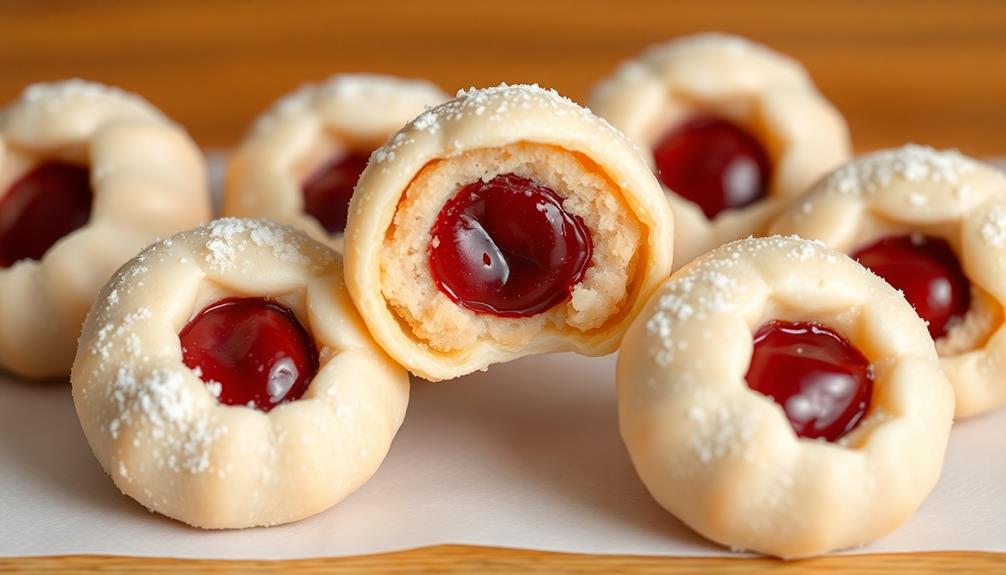
Chapssaltteok, the beloved Korean rice cake, is a delightful treat that encapsulates the essence of Korean cuisine. With its fluffy, chewy texture and delicate sweetness, it's no wonder this traditional delicacy has captured the hearts of both Koreans and food enthusiasts worldwide.
What makes chapssaltteok truly special is its ability to bring people together, whether it's enjoyed during a family gathering or a festive celebration.
As you savor each bite, you'll be transported to the vibrant streets of Seoul, where the aroma of freshly made rice cakes fills the air. The satisfying crunch of the sesame seeds, combined with the pillowy softness of the dough, creates a harmonious blend of flavors and textures that will leave you craving more.
Chapssaltteok isn't just a dessert; it's a beloved part of Korean culture, a tangible representation of the country's rich culinary heritage.
Frequently Asked Questions
What Is the Traditional Way to Shape Chapssaltteok?
You traditionally shape chapssaltteok by hand, gently molding the sticky rice dough into small, bite-sized rounds or oval shapes. This requires skill and practice to achieve the desired texture and appearance.
How Long Does It Take to Properly Age the Rice Paste?
To properly age the rice paste, you'll need about 8-12 hours. The longer you let the paste ferment, the more complex the flavors will become, so don't rush the process.
Can Chapssaltteok Be Frozen for Later Use?
Yes, you can freeze chapssaltteok for later use. It's best to wrap the cakes individually and store them in an airtight container. This'll preserve their texture and flavor when you're ready to enjoy them.
Are There Any Dietary Restrictions for Eating Chapssaltteok?
You'll want to consider any dietary restrictions you may have when eating chapssaltteok. It's made with rice flour, so it's not suitable for those following a gluten-free diet. Additionally, it may contain dairy or other allergens.
Where Can I Find the Necessary Ingredients for Making Chapssaltteok?
You can find the necessary ingredients for making chapssaltteok at your local Asian grocery store or online. They usually carry the rice flour, sugar, and other traditional components needed to make this delicious Korean treat.
